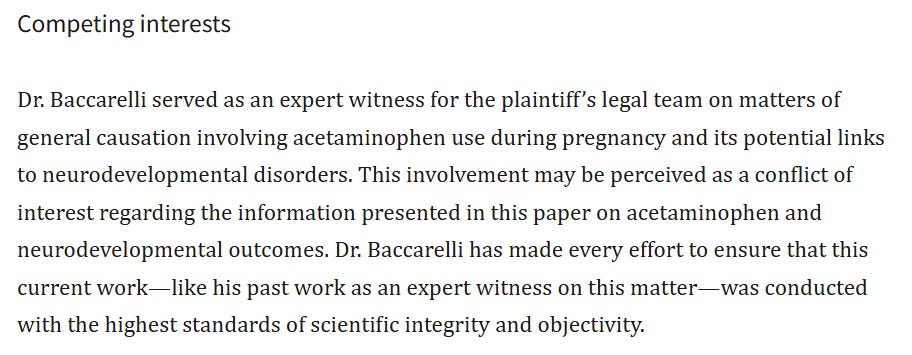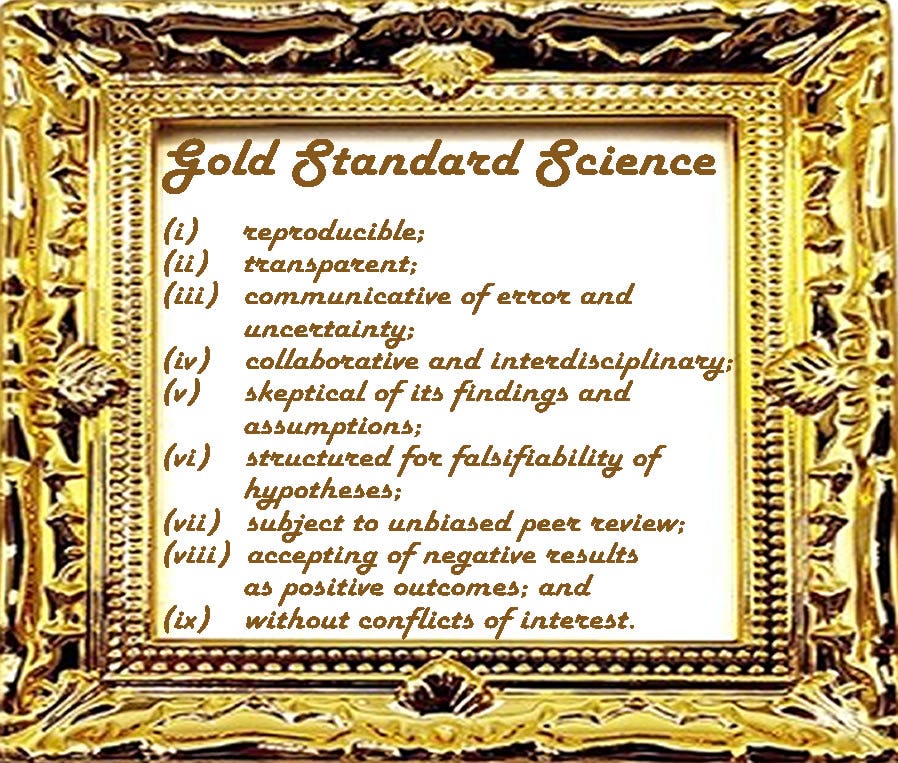Gold Standard Science
Does Trump's Science Executive Order Meet the Challenge?
On May 23, 2025, President Trump signed an executive order to restore gold standard science. The claim made frequently by his secretary for the Department of Health and Human Services, Robert F Kennedy Jr (RFK Jr), is that US regulatory scientists were corrupted, paid by industry and did not respect the scientific method. So what does this new Gold Standard mean for scientific research and American scientists?
The first case of what RFK Jr touted to be Gold Standard Science was the MAHA Commission’s Make Our Children Healthy Again. Much of this report was poorly researched with passages generated from AI and citations to studies that did not exist, but to his defense, RFK had just fired a large percentage of his scientists in those first chaotic months. By the time the White House held a press conference and issued a press release linking autism to acetaminophen, Americans had a chance to see if RFK Jr’s Gold Standard Science could rectify the allegedly sorry state of US science.
Most of the nine points in the Gold Standard Science executive order are basic good scientific practices respected by scientists from industry, the academe and government. RFK Jr can talk the talk about good scientific practices, but can he walk the talk? I decided to put this standard to the test by examining one scientific paper that the White House and four Department of Health and Human Services directors were amplifying during the weeks prior to their autism and Tylenol press conference. Did the Prada/Baccarelli literature review meet the gold standard for science? See the recent Firebreak analysis of the Tylenol-autism campaign for some background information.
The White House executive order declared that “Gold Standard Science means science conducted in a manner that is:
(i) reproducible;”
The Baccarelli paper attempted to challenge a majority of high quality studies, with large cohorts and comparisons of siblings that dismissed the link between Tylenol and autism. The evidence that autism can be linked to prenatal use of Tylenol was only concluded in several weak studies. While conflict in scientific research is normal, in this case, the consensus of reproducible findings, and the consensus of the scientific community, is that there is no link.
(ii) transparent;
The Baccarelli study (heavily amplified in the month leading up to the White House announcement) claimed NIH funding when its actual funding came from NIEHS grants tied to unconnected environmental studies (and not at all related to any planned research into the links between autism and acetaminophen). See an analysis of the study’s subterfuge here. While the main author of the study, Andrea Baccarelli, had received large payouts from the tort law firms suing the producers and retailers of acetaminophen to prepare the research for the failed bellwether cases, no funding amounts were acknowledged in the paper (see quote in gold standard ‘ix’).
(iii) communicative of error and uncertainty;
The Baccarelli study amplified in the month leading up to the White House announcement cherry-picked information between a large number of studies, playing down clear evidence that would challenge the conclusions and major findings. The objective of the paper (and hence the cherry-picking that even the judge who threw Baccarelli’s correlations out, Denise Cote, was able to identify) was to refute those scientists highlighting the errors and uncertainties of papers drawing a correlation between Tylenol and autism.
(iv) collaborative and interdisciplinary;
Indeed the study was interdisciplinary, but the lead authors did not have experience in pharmacological health exposures. Three of the four authors worked in environmental sciences, using the Navigation Guide-based evaluation method - a tool designed by scientists looking for chemical exposures in the environment. The medical health community’s reactions against this paper often involved questions into the authors’ actual qualifications as experts in the field.
(v) skeptical of its findings and assumptions;
The lead author, Diddier Prada, did conclude in an interview that the paper fails to move from correlation to a clear conclusion of causation (of acetaminophen causing autism), but in the promotion of the paper within the media, by the president and by four HHS directors, this skepticism was ignored. The point is that it is very difficult to determine causation in cases like this where the confounding evidence is so large. Conclusions have to be drawn with a large level of modesty and qualification.
(vi) structured for falsifiability of hypotheses;
The Navigation Guide approach is designed to detect and eliminate bias in literature reviews (designed as an attempt by activist scientists to eliminate industry-funded research results). In the case of the Baccarelli paper, it removed a large number of studies that would have falsified the authors’ hypothesis. This tool allowed the Baccarelli paper to cherry pick studies that agreed with their political objective while dismissing research papers that would falsify it.
(vii) subject to unbiased peer review;
The article was published in the Environmental Health journal, a pay-to-play journal published by an organization with a history of retractions. The editorial board is stacked with Collegium Ramazzini fellows (and the founding editor is a fellow in this private club of activist scientist with a long history of coordination and funding with the US litigation industry). The peer review document contains a large amount of blank texts and only the tort law firm-funded researcher replied to the comments.
(viii) accepting of negative results as positive outcomes; and
The goal of the Baccarelli paper, hastily prepared following the collapse of hundreds of lawsuits, was to strengthen the evidence linking prenatal use of acetaminophen and autism. The litigation industry had invested too much in the first series of MDLs to have their cases thrown out for lack of evidence.
(ix) without conflicts of interest.
The Baccarelli study amplified in the month leading up to the White House announcement included researchers funded by the tort law industry and tied to law firms involved in the first round of failed MDLs claiming a link between acetaminophen and autism. Baccarelli himself received payments from tort lawyers amounting to at least $150,000 for preparing the research for the lawsuits. This research was reused in the Environmental Health journal article but still his acknowledgment of such a flagrant conflict of interest was nothing more than flippant (see below).

Did the Baccarelli paper then meet RFK Jr’s widely touted nine Gold Standard Science requirements? It seems to have failed to have been able to meet even one single standard. The White House put this paper front and center in their autism press conference event and policy strategy.
Failing to come close to his Gold Standard Science definition didn’t stop RFK Jr from using this paper to amplify his objectives. To the contrary, research funded by the litigation industry to try to bankrupt industry seems to be the only science RFK Jr has ever identified with. That though refers to another interpretation of “gold”.



